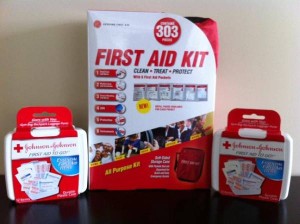Ticks are tiny, spider-like creatures that can attach to the skin, which often result to tick bites. One can come across them while walking outdoors and attach to their new hosts even by brushing grass, bushes and plants. Once attached to their new hos they migrate to the warm, moist regions of the body, such as the hair, armpits and groin. After finding a secure area, they firmly attach to the skin and begin to draw blood. Sizes vary from almost impossible to be seen to fairly large, such as the size of a pencil eraser. Generally, ticks do not carry diseases and most tick bites are harmless. However, they may also carry various diseases ranging from mild to fatal.
Tick-borne diseases are caused by infection from various disease-causing agents, including bacteria, viruses and protozoa. It is not uncommon for ticks to carry more than one pathogen at a time. Some of the most common diseases transmitted from tick bites include:
- Bacteria
- Lyme disease
- Ehrlichiosis
- Rock Mountain spotted fever
- Southern tick-associated rash illness (STARI)
- Relapsing fever
- Tularemia
- Anaplasmosis
- Q fever
- African cattle disease
- Viruses
- Colorado tick fever
- Powassan encephalitis
- Protozoa
- Babesiosis
- Tick paralysis (rare)
Symptoms of Tick Bites
Most people may not even be aware that they have been bitten by ticks as tick bites are typically painless. Bites can go unnoticed and ticks can fall off without the host ever noticing. Most symptoms of tick bites are similar to those of flu. The most common symptoms of tick-borne illnesses include:
- Fevers
- Chills
- Muscle aches
- Fatigue
- Headache
- In Lyme disease, joint pain, circular rash surrounding the red bitten spot and neurologic symptoms
- In STARI, red circular rashes
- In Rocky Mountain spotted fever, small, flat, pink non-pruritic spots on wrists, forearms, ankles and progresses to the trunk, and sometimes, palms and soles
- In tularemia, skin ulcer and swollen lymph glands
- In ehrlichiosis, fever followed by rashes
First Aid for Tick Bites
Due to the many illnesses a tick bite can bring, it may be hard to pinpoint the illness present in the host. That can be determined by the physician attending the patient. However, while waiting for emergency medical assistance or on the way to the hospital, first aid can be administered to the patient. Disclaimer: the advice to be mentioned does not substitute first aid training or doctor’s treatment. Always seek for medical help if symptoms aggravate.
- If the tick is still attached to the person’s skin, remove immediately.
- If possible, wear gloves and remove with tweezers as close to the skin as possible. Gently pull straight out and do not twist.
- Removing the head can avoid passing on diseases during feeding
- Removing the head can prevent infections
- Do not remove using petroleum jelly or hot match to avoid regurgitation of infected fluids into the wound.
- Place the tick in a container of alcohol to be presented to the physician.
- Using warm water and soap, gently wash the bitten area. To prevent infections from occurring, apply antiseptic solution to the tick bite.

